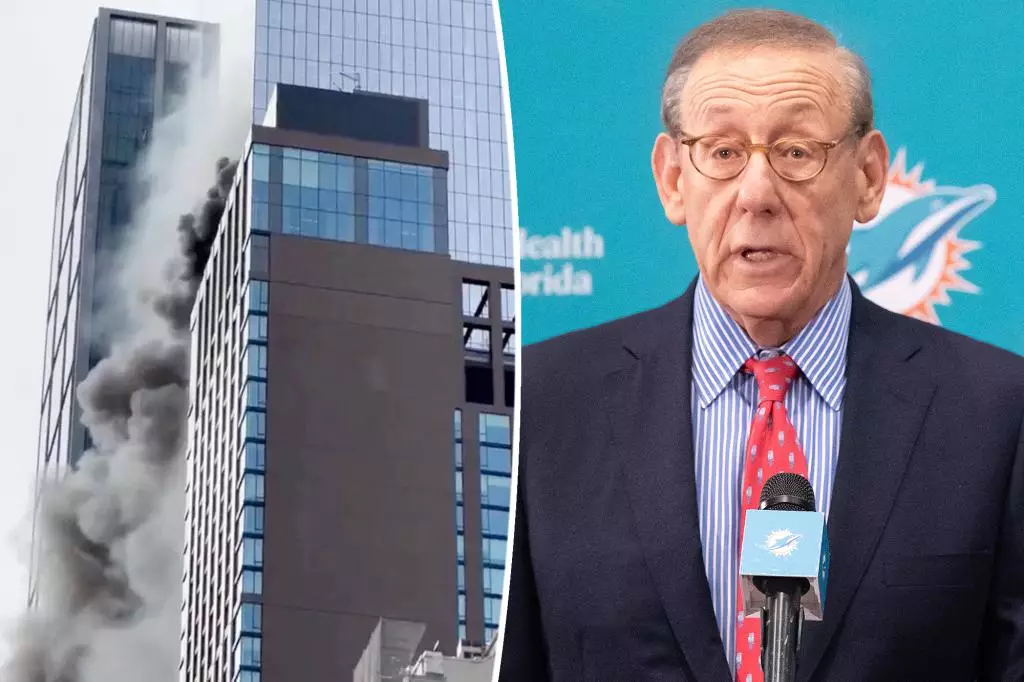The stark reality of urban living took a dramatic turn last week at the Set, a plush apartment building nestled in New York’s opulent Hudson Yards. Owned by Related Companies under the auspices of billionaire Stephen Ross, an unexpected blaze swept through the 44-story high-rise, catching the attention of both residents and the larger New York community. While fires, particularly in urban environments, often evoke a sense of urgency, what followed was a profound misstep in management that led to a significant consequence: the firing of the general manager.
Despite the panic that a fire can instigate, the Set’s incident, reportedly ignited during maintenance work on the cooling tower, was handled with remarkable speed. The fire department arrived promptly, deploying approximately 80 firefighters, and, fortunately, no injuries were reported. Yet, as the smoke cleared, it became evident that the real crisis lay in how the building’s administration managed communication during the emergency. In a high-end establishment where residents expect attentiveness and immediate conciseness, the response fell woefully short.
The Disconnect Between Luxury and Communication
While the Set touts an array of extravagant amenities that combine the essence of a five-star hotel with the conveniences of modern living and tech-centric workplaces, the communication mismanagement highlighted a disconnect between the expectations of affluent residents and the realities of operational protocols. Residents of the building were left in the dark—quite literally. Reports stated that alarms were scarce on lower floors, and many residents were only made aware of the crisis through the spectacle of onlookers in adjacent buildings, rather than through any proactive alert from building management.
Moreover, the reliance on social media and instant group messaging to disseminate crucial information during a fire underscores a shift in how modern luxury living must now adapt. The common thread binding these high-rise dwellers to their living environment was put to the test, and ironically, it was through their personal devices that they learned their abode was engulfed in smoke. This disconnect not only raises questions about the efficacy of crisis protocols in luxury apartment complexes but also calls into question the nature of community that high-rises strive to build.
In the wake of such chaos, Related Companies took decisive action. In the days following the fire, the building issued communications acknowledging their failures and promptly announced the dismissal of the general manager. Such an immediate response highlights the seriousness with which management now views resident safety and communication transparency. Nevertheless, it also serves as a reminder of the inherent vulnerabilities in property management—especially in buildings that position themselves as the apex of luxury living.
In an environment that constantly attracts the wealthy elite, one would expect that a higher standard would prevail concerning crisis management. The hefty amenities offered—ranging from dry cleaning and housekeeping services to communal workspaces and high-tech meeting rooms—seemed trivial against the backdrop of mishandled emergency protocols. Additionally, the standard operating procedure for high-rise buildings generally stipulates that occupants remain indoors unless their units are under direct threat. This procedural guideline complicated resident reactions, as many were left bewildered, unsure of the best course of action during an unexpected emergency.
The incident serves as an instructional module for high-rise living communities across the nation. Prospective residents in prestigious urban dwellings must prioritize not just the aesthetic and luxurious offerings but also the effectiveness of the management’s crisis response systems. As the balance of residents’ safety and luxury living comes into sharper focus, developers and property management firms must adopt an approach that prioritizes both style and substance.
As urban environments grow increasingly common and the demand for high-rise living rises, it is evident that operational excellence must be integrated into the luxury experience. Future developments can glean from the lessons of the Set fire: a reassuring communication protocol is as critical as any high-end amenity. Only through the alignment of luxury expectations and responsive management can such unfortunate events be mitigated in the future, preserving both the safety and serenity that upscale dwellings promise to their elite clientele.


Leave a Reply